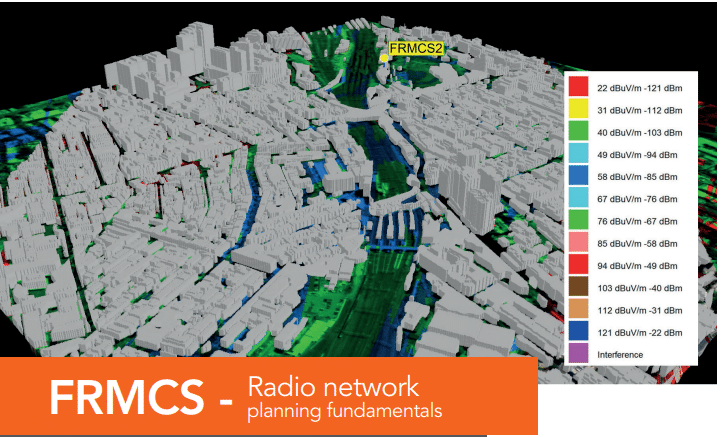
FRMCS is an emerging next-generation standard set to replace GSM-R. Based on 5G technology, it promises to deliver high data rates, low latency, and network-slicing capabilities. FRMCS supports critical railway communication services, including real-time control, safety-critical applications, high-definition video surveillance and more.
With migration underway, many questions remain unanswered about the potential challenges facing network operators. With rail networks operating numerous comms systems across the country and over international borders, managing seamless communications and data exchanges can present significant challenges.

We turn to RF planning experts ATDI for advice on radio network planning and modelling challenges facing this evolving technology. Yahya Khaled, Lead RF engineer, has decades of GSM-R and 5G network design and optimisation experience and addresses some of those questions.
Q. FRMCS standardisation is expected to be finalised in the next few years. What frequency bands will FRMCS use?
A. In September 2021, the Commission announced the harmonised use of the paired frequency bands 874,4 to 880,0 MHz and 919,4 to 925,0 MHz and the unpaired frequency band 1 900 to 1 910 MHz for FRMCS in Europe. Consideration to share the 5GHz frequency band (5 875 to 5 925 MHz) for Urban Rail and ITS TC RT is also in progress.
Q. Legacy networks and FRMCS will need to coexist during network migration. What issues might this present?
A. Interoperability is key to the migration process as planners consider the impact of conflicting systems and the interference created. Challenges vary significantly depending on the band selected. For example, the reverse band runs a risk of uplink or downlink interference, requiring higher quality equipment and custom filters depending on spectrum arrangements in each country. Remember when GSM-R was introduced, it wasn’t an interference-free journey. Moving forward, we may need to consider minimum separation distances or other mitigation measures.
Q. What challenges can we expect FRMCS in terms of coverage? How will environmental conditions affect this?
A. 5G is less susceptible to coverage issues compared to GSM-R. It's more a question of frequency band because propagation is governed by the rules of physics. Selecting higher bands will give higher antenna gains and more directivity which, contrary to mobile networks, is welcome for rail-type comms. Most designers are well-versed in overcoming terrain challenges but fail to account for the impact of man-made structures like stations, new footbridges and so on. These require high-resolution modelling and a 3D GIS dataset supported by a deterministic propagation engine.

Q. FRMCS promises improved data transfer rates for video and other railway data. How will FRMCS deliver sufficient capacity to manage the growing demands for data transmission?
A. A key advantage of 5G is the ability to tag and prioritise traffic. Its structure allows lower RTT delays to provide robust connectivity, as seen with LTE and enhanced further with 5G. From a planning perspective, running traffic modelling to consider sector loading, the type of traffic and achievable SINR for both UL and DL is essential.
Q. How can we model coverage along busy urban rail corridors in and support indoor, outdoor, and underground environments?
Modelling complex environments nowadays is vastly improved thanks to high-resolution 1m maps and applying deterministic propagation models that deliver the prediction accuracy these environments demand.
Q Beamforming is a game-changer in 5G. How will this benefit the rail environment?
I don’t think beamforming will be used for most rail network rollouts, although there are always exceptions. Using two back-to-back highly directive sectors along the rail corridor means the beams are likely to be static. The overlapping beams can carry a plethora of data rather than steering the beam in a variable direction. When using 5G in a multi-spatial focus, don’t be surprised if you see an 8T8R ports antenna with a radiation single beam.
Thank you, Yahya for sharing your insights into the FRMCS network planning. Please tell us about the upcoming Webinar.
ATDI is hosting a webinar on the Fundamentals of RF planning for FRMCS. It will focus on achieving coverage, capacity, QOS requirements and coexistence with legacy systems. The real-life scenarios will give a step-by-step guide on data inputs, including propagation models to ensure the network meets the quality of service, coverage, traffic, capacity, handover, and interference mitigation expectations. Join the team on October 24th at 10 a.m. CEST. Use the QR code below to register or click here.


